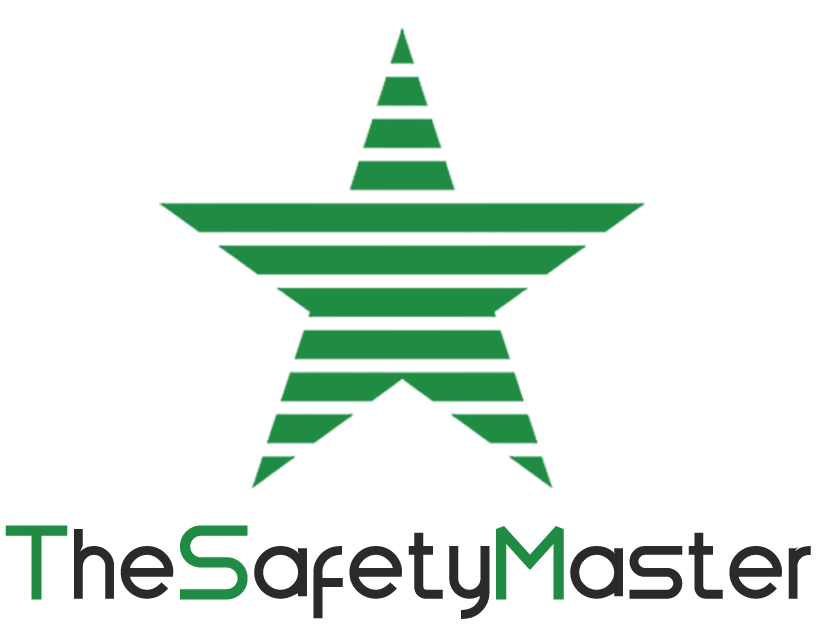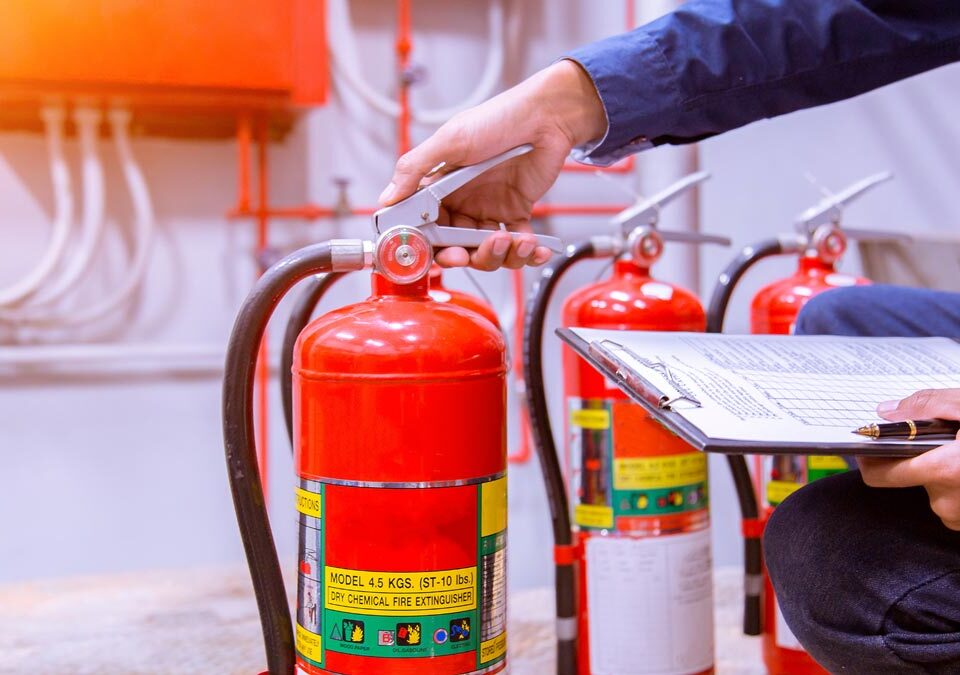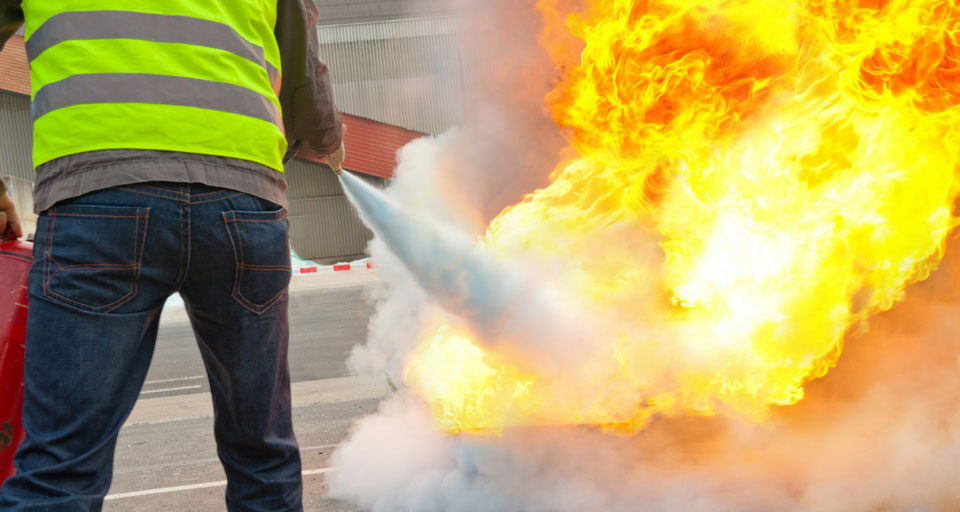The Role of Technology in Modern Fire Safety Audits

14 Elements of Process Safety Management: A Comprehensive Guide to the PSM System
July 8, 2025
How IoT, AI, and Drones Are Revolutionizing the Fire Safety Audit Process
July 11, 2025In today’s fast-evolving industrial and commercial environments, fire risks are more complex than ever before. As infrastructures grow smarter, so must the systems that protect them. Fire safety audits, once reliant on manual checklists and visual inspections, are now embracing cutting-edge technology to ensure precision, speed, and reliability. From thermal imaging and cloud-based reporting to integrated Internet of Things (IoT) systems, the role of technology in modern fire safety audits has become indispensable.
Why Traditional Fire Audits Needed a Technological Upgrade
Fire safety audits have traditionally involved site visits, manual evaluations of safety equipment, and documentation of findings. While this approach provides foundational insights, it often lacks the scalability and accuracy needed for modern-day facilities. Additionally, static reports and paper-based recommendations can delay action and limit coordination between departments.
Technology solves these pain points by making audits more data-driven, consistent, and proactive. By integrating digital tools, audits no longer serve as mere checklists but as dynamic systems for ongoing risk management.
Smart Sensors and IoT in Fire Safety Monitoring
One of the most transformative technologies in fire safety audits is the implementation of IoT-enabled devices. Sensors that detect heat, smoke, gas leaks, and even occupancy patterns provide real-time data to safety teams. These smart sensors can be installed throughout a facility, automatically sending alerts to central dashboards if conditions exceed preset thresholds.
For example, smart smoke detectors can notify both onsite personnel and offsite safety consultants when triggered. These systems can also integrate with automatic suppression systems like sprinklers or gas suppression units to initiate emergency responses without delay.
Cloud-Based Reporting and Digital Documentation
Cloud-based platforms have revolutionized how data is collected, stored, and analyzed during fire safety audits. Inspectors can now use mobile apps or tablets during audits to input data directly into cloud systems. This allows for instant generation of reports, image attachments, timestamping, and analytics.
Such platforms improve transparency and accountability. Stakeholders across departments—from facility managers to compliance officers—can view audit results in real time, track corrective actions, and measure compliance against benchmarks.
The integration of cloud solutions also simplifies compliance with regulatory frameworks, as historical data is easily retrievable and securely stored for audit trails.
Role of AI and Predictive Analytics
Artificial intelligence (AI) and machine learning are being applied to fire safety audits to identify patterns and predict potential hazards. These technologies can analyze large volumes of historical data to forecast high-risk zones, faulty equipment, or human errors that might contribute to fire outbreaks.
Predictive analytics tools can also rank facilities based on their risk profiles and suggest tailored mitigation strategies. This proactive approach moves fire safety from reactive compliance to preventive protection.
AI-driven dashboards can, for instance, indicate that a particular fire extinguisher model has shown a high failure rate during inspections across multiple locations, prompting early replacements or escalated reviews.
Integration with Building Information Modeling (BIM)
Building Information Modeling (BIM) is another technological advancement enhancing fire safety audits. BIM involves creating a digital twin of a physical structure that includes every detail—from electrical layouts to fire exits and HVAC systems.
By integrating fire safety protocols into BIM, auditors can simulate evacuation plans, test the effectiveness of fire suppression systems, and evaluate spatial risk zones. During an actual audit, digital tools layered on BIM allow auditors to conduct more thorough and insightful evaluations without disrupting operations.
This digital modeling also becomes invaluable during emergency response planning and training exercises, providing responders with real-time access to layouts and safety equipment locations.
Thermal Imaging and Drones
Thermal imaging cameras are widely used in fire safety audits to detect overheating electrical panels, machinery, or wiring that may not be visible to the naked eye. These infrared cameras can identify hot spots before they turn into ignition points, especially in critical infrastructure or server rooms.
Drones equipped with thermal imaging and high-resolution cameras are also used to inspect hard-to-reach areas such as high ceilings, rooftops, or large industrial zones. This makes audits safer and more efficient, reducing the need for physical access to potentially dangerous or inaccessible areas.
Role of Process Safety Management in Fire Risk Reduction
When discussing fire risks, it’s impossible to ignore the role of broader Process Safety Management (PSM) systems. PSM focuses on the entire lifecycle of hazardous materials and processes within an industrial setup. By incorporating fire risk parameters into PSM, companies can ensure that their fire audits align with overall risk management strategies.
PSM tools use technology to assess chemical reactions, pressure buildup, storage conditions, and emergency shutdown procedures, thereby mitigating potential fire or explosion incidents at the process level.
The Importance of Integrating HAZOP Study Findings
Another critical component of technologically enhanced fire audits is the integration of data from Hazop Study (Hazard and Operability Study). A Hazop Study is a structured methodology to identify potential hazards and operational failures in processes.
By embedding Hazop results into digital audit systems, fire auditors gain a deeper understanding of high-risk process nodes, critical control points, and potential deviation scenarios. This insight allows for focused inspections and stronger preventive measures within fire safety audits.
Why You Need a Professional Safety Consultant
Technology is powerful, but it must be applied with expertise to deliver value. A professional Safety Consultant brings the required industry knowledge, compliance understanding, and technological proficiency to interpret data meaningfully.
These consultants guide businesses in selecting the right tools, conducting integrated audits, and aligning fire safety practices with international standards. They can also train internal teams, design customized safety protocols, and supervise the implementation of corrective actions.
Conducting a Tech-Enhanced Fire Audit Today
A modern Fire Audit goes far beyond checking extinguishers and alarms. It involves:
- Using digital inspection checklists with real-time syncing
- Collecting sensor data across multiple fire safety parameters
- Reviewing predictive analytics dashboards
- Running simulations through BIM or fire modeling software
- Integrating audit data with broader enterprise safety systems
Whether you’re a factory owner, office manager, or safety officer in a hospital or high-rise building, adopting a tech-forward fire audit ensures higher compliance, minimized downtime, and enhanced human safety.
Fire Safety Audit as Part of a Broader Safety Audit
It’s also essential to view fire audits as part of a comprehensive Safety Audit program. Modern safety audits cover everything from mechanical risks to chemical hazards and ergonomics. Fire safety is a critical pillar within this broader framework, and integrating audit findings into a centralized safety dashboard provides an all-encompassing view of workplace risks.
Conclusion: Technology as a Catalyst for Safer Environments
The fusion of technology with fire safety audits is not just a trend—it’s a necessity. From real-time monitoring and AI-driven insights to cloud-based collaboration and predictive modeling, these tools empower organizations to proactively identify risks, streamline compliance, and protect lives and assets.
Investing in a tech-enabled fire audit isn’t just a checkbox for safety—it’s a commitment to operational excellence and resilience. With the guidance of a qualified safety consultant and the integration of systems like Hazop Study and Process Safety Management, organizations can build a robust, future-ready fire safety infrastructure.




